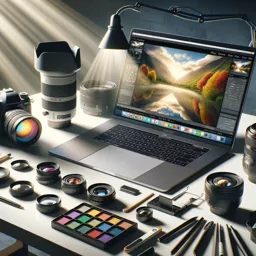Introduction
Underwater photography offers a captivating perspective on the beauty and complexity of aquatic worlds. This field combines the technical aspects of photography with the adventure and challenges of exploring beneath the surface. For beginners, gearing up correctly is crucial to ensure successful, enjoyable, and safe photography sessions.
1. Choosing the Right Camera
For underwater photography, you need a camera that performs well in low-light conditions and can handle the dynamic environment. Compact cameras, mirrorless cameras, and DSLRs all have underwater options. Many popular brands offer cameras specifically designed for underwater use, or you can invest in a waterproof housing for your current camera.
2. Understanding Waterproof Housings
Not all cameras are waterproof out-of-the-box. Waterproof housings, made from polycarbonate or aluminum, seal your device from water and pressure. Always ensure the housing model matches your camera and check for intact O-rings and proper sealing before every dive.
3. Essential Accessories
- Lighting: Water absorbs light quickly, so good lighting equipment is vital. Consider bringing underwater strobes or video lights to brighten your shots and restore colors lost beneath the surface.
- Lens Ports: Interchangeable lens ports accommodate different lenses, such as macro or wide-angle, expanding your creative options.
- Filters: Red or magenta filters help correct color in certain water conditions without artificial lighting.
- Buoyancy Control: Weight systems or buoyancy arms help balance your housing, making handling easier while diving.
4. Maintenance and Protection Tips
Rinse all your gear with fresh water after every use to remove salt and debris. Regularly inspect and clean O-rings, and store your equipment in a cool, dry place. Continuing maintenance ensures your gear lasts longer and stays in optimal working condition.
5. Safety Considerations
Never sacrifice safety for a photograph. Be aware of your depth, air supply, and surroundings. Practice your buoyancy to avoid damaging delicate marine life and stay within the limits of your diving certification.
Conclusion
Equipping yourself with the right gear and knowledge is the first step to capturing breathtaking underwater images. As you gain experience, you’ll develop preferences for certain camera setups and accessories, leading to even better results. Happy shooting and safe diving!
































